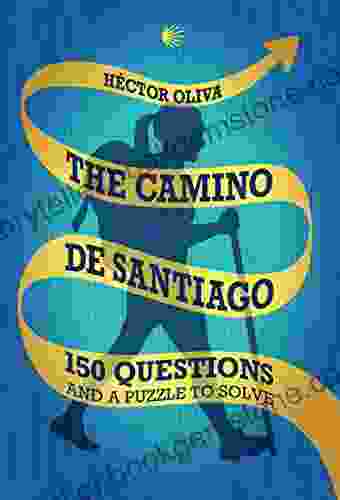The Essential Guide to Graphic Communication: A Beginner's Guide

5 out of 5
| Language | : | English |
| File size | : | 6728 KB |
| Text-to-Speech | : | Enabled |
| Screen Reader | : | Supported |
| Enhanced typesetting | : | Enabled |
| Print length | : | 285 pages |
| Lending | : | Enabled |
Graphic communication is the art and practice of using visual elements to convey ideas and information. It encompasses a wide range of techniques and applications, from traditional print media to digital platforms and interactive experiences. As a form of visual storytelling, graphic communication plays a crucial role in various domains, including marketing, branding, education, and social impact.
This comprehensive guide aims to provide a thorough understanding of graphic communication, its elements, principles, and applications. Whether you're a beginner looking to gain a solid foundation or an aspiring professional seeking to enhance your skills, this in-depth exploration will equip you with the knowledge and tools to convey visual messages effectively.
Elements of Graphic Communication
The basic building blocks of graphic communication include:
- Lines: Lines can create a sense of movement, direction, and division. They can be used to guide the viewer's eye and create shapes and forms.
- Shapes: Shapes are two-dimensional areas defined by lines and curves. They can represent objects, symbols, or abstract concepts.
- Forms: Forms are three-dimensional shapes that have depth and volume. They can create a sense of realism and dimension.
- Colors: Colors can evoke emotions, convey meanings, and create contrast. They can be used to attract attention, highlight important elements, and create a unified design.
- Textures: Textures can add visual interest and depth to a design. They can create a sense of realism or evoke tactile sensations.
- Typography: Typography involves the use of text to convey information and create visual appeal. It includes the selection of fonts, type sizes, and colors.
- Images: Images can provide realism, detail, and emotional impact. They can be used to illustrate concepts, create atmosphere, and evoke specific associations.
Principles of Graphic Communication
Effective graphic communication adheres to a set of guiding principles:
- Unity: Unity ensures that all elements of a design work together harmoniously to create a cohesive whole.
- Contrast: Contrast creates visual interest and emphasis by using elements that are dissimilar in size, color, or shape.
- Repetition: Repetition of elements can create a sense of rhythm, unity, and visual flow.
- Alignment: Alignment organizes elements in a design to create a sense of order and structure.
- Proximity: Proximity groups related elements together to create visual relationships and connections.
- Balance: Balance distributes elements evenly to create a pleasing visual composition.
- White space: White space, or negative space, refers to the areas between and around design elements. It can create a sense of breathing room, improve readability, and enhance the overall impact.
Applications of Graphic Communication
Graphic communication finds applications in a wide array of fields:
- Marketing and Advertising: Graphic communication is used to create visually appealing advertising campaigns, brochures, packaging, and website designs that promote products and services.
- Branding and Identity: Logos, branding guidelines, and visual identities are designed to create a consistent and recognizable brand image.
- Education: Graphic communication is used to create educational materials such as textbooks, infographics, and presentations that enhance learning and understanding.
- Social Impact: Graphic communication can be used to raise awareness about important social issues, promote social change, and mobilize communities.
- Entertainment: Graphic communication is used to create movie posters, album covers, and other promotional materials for the entertainment industry.
- User Interface Design: Graphic communication plays a vital role in designing user interfaces for websites, apps, and software that are both visually appealing and user-friendly.
- Information Design: Graphic communication is used to present complex information in a clear and visually engaging way, such as data visualization and infographics.
The Graphic Design Process
Effective graphic communication involves a systematic design process:
- Research: Conduct thorough research to understand the target audience, project goals, and industry best practices.
- Conceptualization: Develop creative concepts that align with the research findings and project objectives.
- Sketching and Ideation: Generate rough sketches and visual ideas to explore different design solutions.
- Design Development: Refine the selected concepts and create detailed design mockups.
- Feedback and Refinement: Seek feedback from stakeholders and iterate on the design to improve its effectiveness.
- Production: Prepare the final design for production, considering factors such as printing, web display, or other intended mediums.
Communication Theory and Visual Storytelling
Understanding communication theory and visual storytelling techniques is essential for conveying clear and impactful messages:
- Communication Models: Familiarize yourself with communication models such as the Shannon-Weaver model and the AIDA model to understand the communication process and its elements.
- Visual Storytelling: Learn how to use visual elements to create compelling stories that engage audiences and convey complex ideas in a visually appealing way.
- Visual Hierarchy: Utilize visual hierarchy to prioritize and organize information, guiding the viewer's eye through the design and ensuring that the most important elements are noticed first.
Graphic Design Software and Tools
Various software tools and applications are available to enhance your graphic communication workflow:
- Adobe Creative Suite: Adobe Photoshop, Illustrator, InDesign, and After Effects are industry-standard software for image editing, vector graphics, page layout, and motion graphics.
- Sketch: Sketch is a user-friendly vector-based design tool for creating digital sketches, wireframes, and prototypes.
- Figma: Figma is a cloud-based collaborative design tool that enables real-time collaboration and prototyping.
- Canva: Canva is a user-friendly online graphic design platform that offers customizable templates and design tools for non-designers.
- Google Fonts: Google Fonts provides a vast library of free and open-source fonts to enhance your typography.
Mastering graphic communication empowers you to communicate ideas, evoke emotions, and create lasting impressions through visual storytelling. This comprehensive guide has provided you with a solid foundation in the elements, principles, and applications of graphic communication. By applying these principles and utilizing the available tools and techniques, you can harness the power of visual communication to achieve your communication goals and make a meaningful impact.
Remember, effective graphic communication is an ongoing journey of learning, experimentation, and refinement. Embrace the principles, explore different design styles, and stay updated on industry trends to continuously improve your skills and create visually stunning and impactful designs.
5 out of 5
| Language | : | English |
| File size | : | 6728 KB |
| Text-to-Speech | : | Enabled |
| Screen Reader | : | Supported |
| Enhanced typesetting | : | Enabled |
| Print length | : | 285 pages |
| Lending | : | Enabled |
Do you want to contribute by writing guest posts on this blog?
Please contact us and send us a resume of previous articles that you have written.
 Best Book
Best Book Page Flip
Page Flip Bookshelf
Bookshelf Literary loom
Literary loom Chapter
Chapter Bookish
Bookish PageTurner
PageTurner Bibliophile
Bibliophile Story
Story Inkwell
Inkwell Bookworm
Bookworm Labyrinth
Labyrinth Plot Twist
Plot Twist Prose
Prose Paperback
Paperback Storyteller
Storyteller Sanctuary
Sanctuary Fiction
Fiction Reading
Reading Chronicle
Chronicle Read
Read Tamar Diana Wilson
Tamar Diana Wilson Asaf Messerer
Asaf Messerer Luke Nguyen
Luke Nguyen Michael Kimmelman
Michael Kimmelman Jane Monteith
Jane Monteith Tamron Hall
Tamron Hall Satyajit Ray
Satyajit Ray Arlo Adams
Arlo Adams Pat Cadigan
Pat Cadigan Scott Westerfeld
Scott Westerfeld Heather Vogel Frederick
Heather Vogel Frederick Ashley Bristowe
Ashley Bristowe Doris Marjorie Moore
Doris Marjorie Moore Ari Seth Cohen
Ari Seth Cohen Miss Jenesequa
Miss Jenesequa Michael Tucker
Michael Tucker Koji A Dae
Koji A Dae Eileen Mcnamara
Eileen Mcnamara Anne Richardson Williams
Anne Richardson Williams Mark Edward Harris
Mark Edward Harris T R Todd
T R Todd Joe Abercrombie
Joe Abercrombie Elise Darcy
Elise Darcy Annemarie Bean
Annemarie Bean Michael Jan Friedman
Michael Jan Friedman Lorna Luft
Lorna Luft Betty Reynolds
Betty Reynolds Detlev Henschel
Detlev Henschel Marta Mcdowell
Marta Mcdowell Clare Therese Gray
Clare Therese Gray Joan Baxter
Joan Baxter Antoinette Nora Claypoole
Antoinette Nora Claypoole Lena Grey
Lena Grey Bob Mayer
Bob Mayer Ariana Godoy
Ariana Godoy H Dolmetsch
H Dolmetsch Anne Hillerman
Anne Hillerman Doug Peterson
Doug Peterson Jay Boyce
Jay Boyce Jim Steinmeyer
Jim Steinmeyer Sara Paretsky
Sara Paretsky Fig Taylor
Fig Taylor Armine Von Tempski
Armine Von Tempski Riva Lehrer
Riva Lehrer Wade Motawi
Wade Motawi Owen Jones
Owen Jones Kyunghee Pyun
Kyunghee Pyun Axel Hacke
Axel Hacke Armin Weber
Armin Weber Edgar Degas
Edgar Degas Jt Sawyer
Jt Sawyer Howling Moon Books
Howling Moon Books Joseph Birchall
Joseph Birchall Anthony C Winkler
Anthony C Winkler Tony Randgaard
Tony Randgaard Jaime Castle
Jaime Castle Prenisha Aja
Prenisha Aja Rob Schmitz
Rob Schmitz Vernor Vinge
Vernor Vinge Jay Allan
Jay Allan Ron Stocke
Ron Stocke Phil Doran
Phil Doran Maria Venegas
Maria Venegas Sheila O Flanagan
Sheila O Flanagan Elizabeth Friendship
Elizabeth Friendship Arthur Conan Doyle
Arthur Conan Doyle Elena M Watson
Elena M Watson Anne Rice
Anne Rice Deborah Paris
Deborah Paris Tim Gunn
Tim Gunn Maureen T Corrigan
Maureen T Corrigan Angela Y Davis
Angela Y Davis J R Osborn
J R Osborn Annemarie Strehl
Annemarie Strehl Regina Held
Regina Held Scott Hughey
Scott Hughey Tony Hillerman
Tony Hillerman Destiny Davis
Destiny Davis Hanife Hassan O Keeffe
Hanife Hassan O Keeffe Scott M Madden
Scott M Madden Ariel Dorfman
Ariel Dorfman Robert D Kaplan
Robert D Kaplan Jonathan Strahan
Jonathan Strahan Annie Keary
Annie Keary Nnedi Okorafor
Nnedi Okorafor Peter James West
Peter James West Juliette Sobanet
Juliette Sobanet Avery Blake
Avery Blake Vanessa Hua
Vanessa Hua Tia Williams
Tia Williams David E Stannard
David E Stannard Stephan Talty
Stephan Talty Paul Steinberg
Paul Steinberg Antonis Tsagaris
Antonis Tsagaris Lou Sutton
Lou Sutton Eric Campbell
Eric Campbell Annette Insdorf
Annette Insdorf Patrick Rothfuss
Patrick Rothfuss David Larocca
David Larocca Waldo Rodriguez
Waldo Rodriguez Anne Moody
Anne Moody B Russell Mcconkie
B Russell Mcconkie Ernst Lehner
Ernst Lehner Mary Maccracken
Mary Maccracken Carl Stubblefield
Carl Stubblefield Stephen Moss
Stephen Moss Annemieke Mein
Annemieke Mein Kindle Edition
Kindle Edition Richard Pikesley
Richard Pikesley Jose Antonio Salgado Alonso
Jose Antonio Salgado Alonso Meyer Berger
Meyer Berger Geoff Schumacher
Geoff Schumacher Ayn Rand
Ayn Rand Samantha Hahn
Samantha Hahn Marlene Wagman Geller
Marlene Wagman Geller Vladimir London
Vladimir London Sari Botton
Sari Botton Benjamin Percy
Benjamin Percy Carolyn Jenkins
Carolyn Jenkins Asali Solomon
Asali Solomon Colonial Williamsburg Foundation
Colonial Williamsburg Foundation Blackhorse Mitchell
Blackhorse Mitchell Wakefield Poole
Wakefield Poole Anne Morrow Lindbergh
Anne Morrow Lindbergh Mary Renault
Mary Renault Mary Kay Ricks
Mary Kay Ricks Tiffany Roberts
Tiffany Roberts Gina Rossi Armfield
Gina Rossi Armfield Nathan Deuel
Nathan Deuel Sue Miller
Sue Miller Annette Freeman
Annette Freeman Elizabeth David
Elizabeth David Peter Watts
Peter Watts Bill White
Bill White Bernadette Murphy
Bernadette Murphy Christopher Simmons
Christopher Simmons Arnold Rampersad
Arnold Rampersad Laura Davis Chanin
Laura Davis Chanin Arthur H Buckley
Arthur H Buckley Avanti Centrae
Avanti Centrae Bwwm Love
Bwwm Love Wesley B Turner
Wesley B Turner Arthur C Clarke
Arthur C Clarke Jason Frye
Jason Frye Anne Mccaffrey
Anne Mccaffrey Anton Chekhov
Anton Chekhov Sonia Misra
Sonia Misra John H Clark Iii
John H Clark Iii Chris Saper
Chris Saper Anne Lister
Anne Lister Christopher Sieving
Christopher Sieving Debbie Macomber
Debbie Macomber Annette Gordon Reed
Annette Gordon Reed Arielle Silverman Ph D
Arielle Silverman Ph D Mackinley Helm
Mackinley Helm Apsley Cherry Garrard
Apsley Cherry Garrard Martin Cruz Smith
Martin Cruz Smith New Edition Kindle Edition
New Edition Kindle Edition B V Larson
B V Larson Ar Corbin
Ar Corbin Edward Achorn
Edward Achorn R G Collingwood
R G Collingwood Ashley K Stoyanov Ojeda
Ashley K Stoyanov Ojeda Joseph Wambaugh
Joseph Wambaugh S H Jucha
S H Jucha Jennifer Homans
Jennifer Homans Eric Warren
Eric Warren Anwei Skinsnes Law
Anwei Skinsnes Law Jan Murphy
Jan Murphy Stewart James
Stewart James Jeffrey Vonk
Jeffrey Vonk Artemisia Gentileschi
Artemisia Gentileschi Philip Tyler
Philip Tyler John A Crespi
John A Crespi Ashley Antoinette
Ashley Antoinette Anthony M Amore
Anthony M Amore Avery Grey
Avery Grey Ashlee Vance
Ashlee Vance Quentin Tarantino
Quentin Tarantino Arleta Pech
Arleta Pech Shami Stovall
Shami Stovall Catherine E Mckinley
Catherine E Mckinley Zharel Anger
Zharel Anger Tim Z Hernandez
Tim Z Hernandez Karl Ove Knausgaard
Karl Ove Knausgaard Rebecca Keegan
Rebecca Keegan John Davidson
John Davidson Anton Hager
Anton Hager Nick Cole
Nick Cole Anne Green Gilbert
Anne Green Gilbert Matthew Jm Carpenter
Matthew Jm Carpenter Brendan Edwards
Brendan Edwards S C Jensen
S C Jensen Blaze Ward
Blaze Ward Nicholas Sansbury Smith
Nicholas Sansbury Smith James Rosone
James Rosone Zalmay Khalilzad
Zalmay Khalilzad Clive Hallett
Clive Hallett Shugri Said Salh
Shugri Said Salh Marina Garone Gravier
Marina Garone Gravier Rebecca Serle
Rebecca Serle W Michael Blumenthal
W Michael Blumenthal Edgar Rice Burroughs
Edgar Rice Burroughs Mark Baskinger
Mark Baskinger Francesca Fiorani
Francesca Fiorani Jane Yolen
Jane Yolen Julian Stallabrass
Julian Stallabrass D Levesque
D Levesque Carne Griffiths
Carne Griffiths Barbara Demarco Barrett
Barbara Demarco Barrett Dave Bartell
Dave Bartell Paul Holt
Paul Holt Rivers Solomon
Rivers Solomon Jesse Martin
Jesse Martin Laurence Oliphant
Laurence Oliphant Jay Caspian Kang
Jay Caspian Kang Bear Heart
Bear Heart Nicole Casey
Nicole Casey Darby English
Darby English Kevin Mannens
Kevin Mannens Gloria Mattioni
Gloria Mattioni Shonda Buchanan
Shonda Buchanan Sarah Crafts
Sarah Crafts Arthur Bartow
Arthur Bartow Sadhna Shanker
Sadhna Shanker Jasper T Scott
Jasper T Scott Annette Kowalski
Annette Kowalski Kim Knox
Kim Knox Robert J Serling
Robert J Serling B B Thatcher
B B Thatcher Robert V Camuto
Robert V Camuto John Woolf
John Woolf Doug Scott
Doug Scott Linda Furiya
Linda Furiya Anne Keenan Higgins
Anne Keenan Higgins Gail Morin
Gail Morin Thomas M Hill
Thomas M Hill Atsons
Atsons Jean Guerrero
Jean Guerrero N L Hudson
N L Hudson John Triptych
John Triptych Scott Lerman
Scott Lerman Keller Easterling
Keller Easterling Julie Nelson Davis
Julie Nelson Davis John Scarne
John Scarne Haruki Murakami
Haruki Murakami Ashley Fiolek
Ashley Fiolek Michael Fleishman
Michael Fleishman Peter Turchi
Peter Turchi John Izbicki
John Izbicki Yasmin Angoe
Yasmin Angoe Hannah Arendt
Hannah Arendt B Ruby Rich
B Ruby Rich Kalyn Franke
Kalyn Franke Pico Iyer
Pico Iyer Richard Killeen
Richard Killeen Anthea Sharp
Anthea Sharp Linda Nagata
Linda Nagata Eugenio Barba
Eugenio Barba Anthony James
Anthony James Dennic Chunman Lo
Dennic Chunman Lo Valerie Biden Owens
Valerie Biden Owens Lutishia Lovely
Lutishia Lovely Smauggy Universe
Smauggy Universe David Consuegra
David Consuegra Chris A Norton
Chris A Norton Pamela Des Barres
Pamela Des Barres Colin Angus
Colin Angus Annie Ernaux
Annie Ernaux Maxine Leeds Craig
Maxine Leeds Craig Arrigo Cipriani
Arrigo Cipriani Anthony Ryder
Anthony Ryder Ursa Dax
Ursa Dax Jodi Ohl
Jodi Ohl Todd Barry
Todd Barry Claire Devarrieux
Claire Devarrieux Chawadee Nualkhair
Chawadee Nualkhair Beth Haslam
Beth Haslam Matthew A Goodwin
Matthew A Goodwin Emma Read
Emma Read Graham Fraser
Graham Fraser Jun Maeda
Jun Maeda Tara Wells
Tara Wells Mary Ann Scott
Mary Ann Scott Michael Evamy
Michael Evamy Michael Frank
Michael Frank Margaret Walker
Margaret Walker Tracy Franz
Tracy Franz Joe Russo
Joe Russo Anthony J Melchiorri
Anthony J Melchiorri Talia Beckett
Talia Beckett Woody Allen
Woody Allen Olive Collins
Olive Collins Joseph Mcbride
Joseph Mcbride Fergal Keane
Fergal Keane Tay Mo Nae
Tay Mo Nae Br Kingsolver
Br Kingsolver Ava Archer
Ava Archer Chris Cozen
Chris Cozen Kristen Ashley
Kristen Ashley Zeneba Bowers
Zeneba Bowers King Ellie
King Ellie Robert Beverly Hale
Robert Beverly Hale Nancy Lee Mccaskill
Nancy Lee Mccaskill Joan Bess
Joan Bess Frank Conroy
Frank Conroy Lonely Planet
Lonely Planet Joan Tollifson
Joan Tollifson Sarah Vallance
Sarah Vallance Nora Roberts
Nora Roberts Steven M Nolt
Steven M Nolt Ray Bradbury
Ray Bradbury Karen A Romanko
Karen A Romanko Caroline Montague
Caroline Montague Austin Howe
Austin Howe Cynthia Winton Henry
Cynthia Winton Henry Anthony Ryan
Anthony Ryan Annette Dozier
Annette Dozier Jason Louis
Jason Louis Asimina Nteliou
Asimina Nteliou Lizzie Williams
Lizzie Williams Anton Treuer
Anton Treuer Martin Kemp
Martin Kemp Oscar Zeta Acosta
Oscar Zeta Acosta Xiaolu Guo
Xiaolu Guo Kris Jenner
Kris Jenner Jacqueline Rayner
Jacqueline Rayner Anthony Jones
Anthony Jones James D Umbach
James D Umbach Arthur C Danto
Arthur C Danto Antonia Fraser
Antonia Fraser Brian W Smith
Brian W Smith Aziz Shihab
Aziz Shihab Christine Denniston
Christine Denniston Suzanne Fredericq
Suzanne Fredericq Christopher Griffin
Christopher Griffin Gayatri Gopinath
Gayatri Gopinath Janet Farnsworth
Janet Farnsworth R A Lafferty
R A Lafferty Robert Graysmith
Robert Graysmith Patricia Williams
Patricia Williams George Bird Grinnell
George Bird Grinnell Tony Peak
Tony Peak Approach Guides
Approach Guides Chris Weyers
Chris Weyers De Andrea
De Andrea Anthony Slide
Anthony Slide Elizabeth Bard
Elizabeth Bard Anne De Courcy
Anne De Courcy Saeed Jones
Saeed Jones Kaitlyn Greenidge
Kaitlyn Greenidge Anthony David
Anthony David Morgan Rogers
Morgan Rogers Aubrey A Jones
Aubrey A Jones Yuk Hui
Yuk Hui Ashleynicole
Ashleynicole Arthur Murray
Arthur Murray Anton Tekshin
Anton Tekshin Lydia Wilen
Lydia Wilen Ruth Wariner
Ruth Wariner Magi Nams
Magi Nams Colby Buzzell
Colby Buzzell Peter F Hamilton
Peter F Hamilton M N Forgy
M N Forgy Cathy Curtis
Cathy Curtis Oliver Mayes
Oliver Mayes Jan Morris
Jan Morris Lorraine Caputo
Lorraine Caputo Dirk Hayhurst
Dirk Hayhurst Leokadia Schmidt
Leokadia Schmidt Robert Dugoni
Robert Dugoni Valerie Mckeehan
Valerie Mckeehan George Huppert
George Huppert Walt Bachman
Walt Bachman Nancy Nicholson
Nancy Nicholson Karen Mccartney
Karen Mccartney Franklin Horton
Franklin Horton Arthur Miller
Arthur Miller Steven Bradley
Steven Bradley Art Wolfe
Art Wolfe Beata Lubas
Beata Lubas Charles Nordhoff
Charles Nordhoff Anne Sebba
Anne Sebba Anthony M Strong
Anthony M Strong Diana Kupershmit
Diana Kupershmit Pearl Howie
Pearl Howie Ashley Jaquavis
Ashley Jaquavis Paul Brinkley Rogers
Paul Brinkley Rogers Jason Waguespack
Jason Waguespack Ken Seeroi
Ken Seeroi W A Bentley
W A Bentley Anne Manera
Anne Manera Chloe Fox
Chloe Fox August Wilson
August Wilson Tracy Birdsall
Tracy Birdsall Ashley Brantley
Ashley Brantley Tim Downs
Tim Downs Erin Eitter Kono
Erin Eitter Kono Rebecca Kaye
Rebecca Kaye Kao Kalia Yang
Kao Kalia Yang Pankaj Mishra
Pankaj Mishra Howard Dully
Howard Dully Ansel Adams
Ansel Adams Jane Sullivan
Jane Sullivan Pat Hall
Pat Hall Madeleine Walker
Madeleine Walker Eric Broudy
Eric Broudy Rosemary Sullivan
Rosemary Sullivan Kim Erwin
Kim Erwin Binka Le Breton
Binka Le Breton Michael Chatfield
Michael Chatfield Margaret Scott
Margaret Scott Pamela Cutter
Pamela Cutter Katja Pantzar
Katja Pantzar Arne Dehli
Arne Dehli Austin Channing Brown
Austin Channing Brown Brian Butko
Brian Butko Beverly Galeskas
Beverly Galeskas Karen Ordahl Kupperman
Karen Ordahl Kupperman Gene D Phillips
Gene D Phillips Billy Connolly
Billy Connolly Kirsten Anderson
Kirsten Anderson Peter Jazwinski
Peter Jazwinski Charles Taliaferro
Charles Taliaferro Fifi O Neill
Fifi O Neill John H Groberg
John H Groberg Laurel Ann Francis
Laurel Ann Francis George Rathmell
George Rathmell Ashley Mahlberg
Ashley Mahlberg Arielle Eckstut
Arielle Eckstut Sarah Winnemucca Hopkins
Sarah Winnemucca Hopkins Mimi Kwa
Mimi Kwa Anton Roux
Anton Roux Jan Cohen Cruz
Jan Cohen Cruz Anne Frank
Anne Frank Obed Silva
Obed Silva Antony Kamm
Antony Kamm Michael Betancourt
Michael Betancourt Davida Schulman
Davida Schulman Berlitz Publishing
Berlitz Publishing Lian Hearn
Lian Hearn David Deal
David Deal Haben Girma
Haben Girma Myrnoska Scott
Myrnoska Scott Kathy Kolbe
Kathy Kolbe Deborah D Douglas
Deborah D Douglas James Maskalyk
James Maskalyk Bella Martin
Bella Martin Noy
Noy John E Siers
John E Siers Donald Murray
Donald Murray
Light bulbAdvertise smarter! Our strategic ad space ensures maximum exposure. Reserve your spot today!
 Alvin BellFollow ·19k
Alvin BellFollow ·19k Felipe BlairFollow ·9.4k
Felipe BlairFollow ·9.4k Joseph HellerFollow ·5k
Joseph HellerFollow ·5k Edwin CoxFollow ·16.8k
Edwin CoxFollow ·16.8k Isaac BellFollow ·13.4k
Isaac BellFollow ·13.4k Gus HayesFollow ·6.7k
Gus HayesFollow ·6.7k Art MitchellFollow ·4.7k
Art MitchellFollow ·4.7k Jeremy CookFollow ·10.9k
Jeremy CookFollow ·10.9k

 Braden Ward
Braden WardMade to Order Robots and the Coming Revolution
Robots are becoming increasingly common...

 Clay Powell
Clay Powell1971: A Year in the Life of Color
The year 1971 was a pivotal one for color....

 Ralph Waldo Emerson
Ralph Waldo EmersonTech World's Undying Mercenaries: A Deep Dive into the...
In the ever-evolving landscape of the...

 Wade Cox
Wade CoxThe Ultimate Traveler's Guide to the People, Places, and...
Travel has always been a part of the human...

 Evan Simmons
Evan SimmonsA Comprehensive Guide: Uncovering Small Town Culinary...
: A Culinary Odyssey Beyond the City...
5 out of 5
| Language | : | English |
| File size | : | 6728 KB |
| Text-to-Speech | : | Enabled |
| Screen Reader | : | Supported |
| Enhanced typesetting | : | Enabled |
| Print length | : | 285 pages |
| Lending | : | Enabled |














